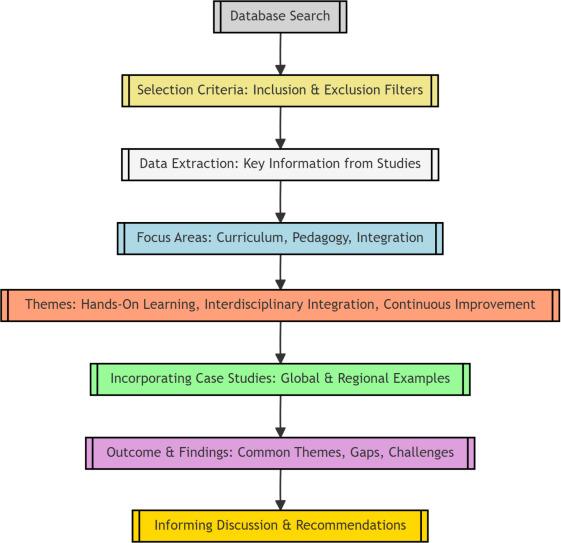Top strategies for Cybersecurity in Educational Institutions: protecting Student data in 2024
Introduction: The New Frontier of Cybersecurity in Education
In today’s digital age, educational institutions are increasingly reliant on technology for governance, learning management, and communication. While these advancements offer myriad benefits, they also expose schools and universities to significant cybersecurity threats. Student data, including personal facts, academic records, and financial details, is a prime target for cybercriminals. As data breaches escalate globally, in 2024, it is indeed more crucial than ever for educational institutions to prioritize robust cybersecurity strategies. This comprehensive guide explores the top cybersecurity strategies for educational institutions, emphasizing practical steps to effectively protect student data in 2024.
Why Cybersecurity Matters for Schools and Universities
Educational institutions handle vast amounts of sensitive data, making them lucrative targets for hackers. Cyber attacks can lead to identity theft, financial loss, loss of reputation, and interruptions in the learning process. Notably, the FERPA (Family Educational Rights and Privacy Act) and similar regulations underscore the legal responsibilities for protecting student information. In 2023-2024,ransomware attacks surged in K-12 schools and higher education,highlighting urgent vulnerabilities.
Key Cyber Threats Facing educational Institutions in 2024
- Phishing Attacks: Deceptive emails or messages targeting staff and students to steal credentials.
- Ransomware: Malicious software encrypts school data until a ransom is paid.
- Unauthorized Access: Insufficient access controls leading to breaches of confidential data.
- Insider Threats: Risks posed by current or former students, staff, or faculty with access to sensitive systems.
- IoT Vulnerabilities: Insecure “smart” devices integrated into campus infrastructure.
Top Cybersecurity Strategies for Educational Institutions in 2024
adopting comprehensive cybersecurity strategies ensures the protection of student data and institutional integrity. Here are the most effective strategies educational leaders should implement this year:
1. Conduct regular Risk Assessments
- Identify Vulnerabilities: Regularly evaluate your school’s network,devices,and software to identify potential weak points.
- Threat Modeling: Prioritize risks based on potential impact on student data and operations.
- Action plans: Develop an incident response plan based on assessment outcomes.
2. Implement Strong Access Controls and Authentication
- Multi-Factor Authentication (MFA): mandate MFA for all staff and student logins to minimize credential theft.
- Role-Based Access: Assign permissions based on user roles to limit access to sensitive data.
- Monitor User Activity: Use advanced monitoring tools to detect and investigate suspicious behavior.
3. Comprehensive Security Awareness Training
- Regular Workshops and Simulations: Educate teachers, staff, and students about phishing, password security, and scam recognition.
- Continuous Updates: Keep educational materials current with emerging cyber threats.
4. Keep systems and Software Updated
- Patch Management: Automatically deploy updates and security patches to operating systems and applications.
- Vendor Evaluation: Choose software providers with a strong track record of security support.
5. Secure Your Networks and Endpoints
- Firewall Protection: Install and configure enterprise-grade firewalls to shield institutional networks.
- Endpoint Security Solutions: Deploy antivirus and anti-malware on all devices,including faculty and student laptops.
- Segregated Networks: Separate administrative, student, guest, and IoT devices on different networks.
6. Data Encryption and Secure Storage
- Encrypt at Rest and In Transit: Make sure all student data is encrypted whether stored or transmitted over the internet.
- Backup Policies: Implement automatic backups to secured cloud or physical locations with regular integrity checks.
7. Develop a Robust Incident Response Plan
- Response Teams: Designate a cybersecurity incident response team for your institution.
- Clear procedures: Outline steps for detection, notification, containment, and recovery of breaches.
- Regular Drills: Test the incident response plan to ensure readiness and minimize response time.
Benefits of Strong Cybersecurity in Education
Investing in cybersecurity measures yields broad benefits beyond simple compliance:
- Safeguards student and faculty privacy.
- Maintains uninterrupted educational operations.
- Builds trust among parents, students, and faculty.
- Reduces risk of financial loss due to attacks and penalties.
- Improves institution’s reputation and competitiveness.
- Enables safe digital change and adoption of new learning tools.
Practical Tips for Boosting School Cybersecurity
- change default passwords and avoid password sharing.
- Use reputable virtual private Networks (VPNs) for remote access.
- Monitor social media for potential data leaks or phishing campaigns.
- Review third-party app permissions regularly.
- Offer secure Wi-Fi for students and guests with proper isolation from internal networks.
- Encourage students to report suspicious emails or digital activity.
- Install automatic screen locks on computers in shared spaces.
Case Studies: Real-World Examples of Cybersecurity Success
1. University of California, San Francisco (UCSF): After experiencing a ransomware attack in 2020, UCSF revamped its security systems in partnership with industry experts. By 2023, they had developed rapid threat detection systems and a university-wide MFA mandate, cutting attempted breaches by 70%.
2. Lakewood Public Schools: This K-12 district adopted zero-trust network principles and conducted monthly phishing simulations. Consequently, they recorded a 40% reduction in accomplished phishing attempts within the first academic year.
Firsthand Experience: Insights from an IT Administrator
“Our biggest breakthrough came when we combined regular cybersecurity workshops for students with the deployment of multi-factor authentication across all portals. In one year, we saw a dramatic decrease in unauthorized access attempts. Education and technology must go hand-in-hand for true cyber safety in schools.”
—IT Director, Pacific Northwest High School
Conclusion: Staying Ahead in Cybersecurity for Schools in 2024
Cybersecurity in educational institutions must be proactive, comprehensive, and ever-evolving. With the increasing sophistication of cyber threats, protecting student data in 2024 demands a multifaceted approach—spanning risk assessment, robust authentication, education, network security, and responsive data protocols. By embracing these top cybersecurity strategies, educational leaders can establish a safer digital environment, protect their community, and maintain public trust. Empower your institution today, and ensure every learner’s data is protected now and in the future.

